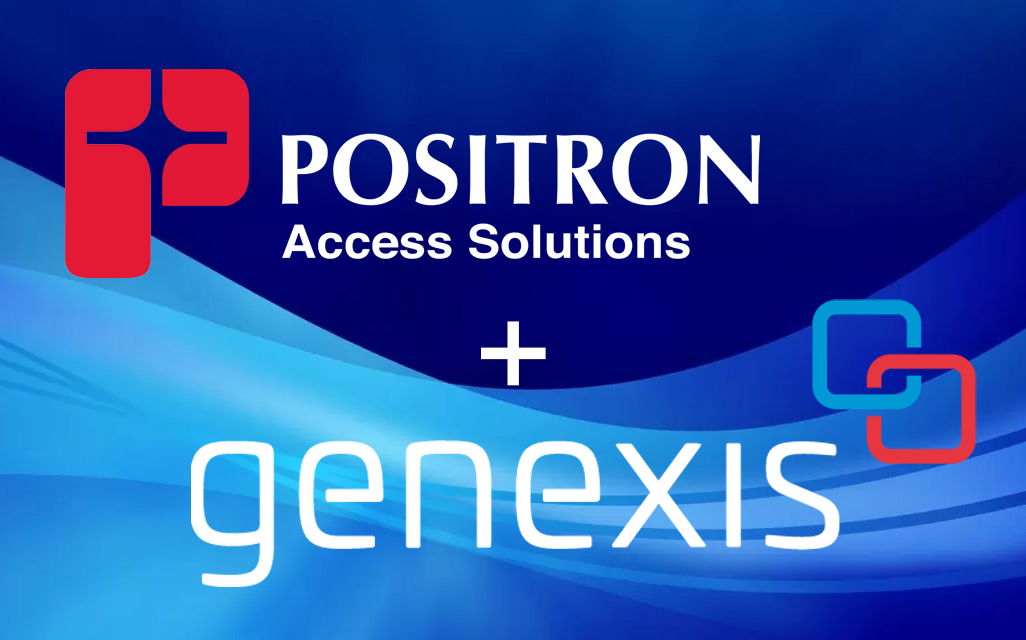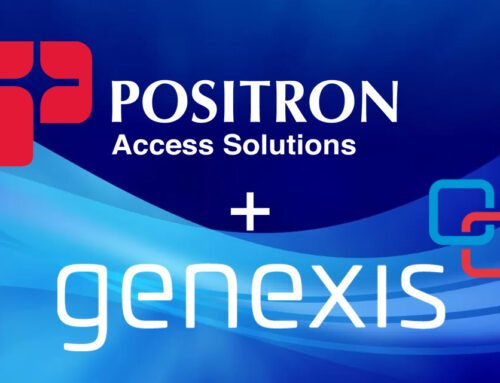The Canadian MDU broadband provider finds competitive footing with gigabit connectivity across fiber and existing building wiring media.
The Canadian MDU broadband provider finds competitive footing with gigabit connectivity across fiber and existing building wiring media.
Novus Entertainment Inc. (“Novus”), seeks to hold its top position in the competitive Canadian broadband market by adopting a multi-technology approach. Unlike some of its competitors, Novus owns the fiber it brings to buildings, enabling it to control quality of service and consistency.
Novus, which provides internet, phone and TV services, saw the value of fiber-based services early, and was the first provider to widely deploy gigabit service in Metro Vancouver. Today, Novus serves 800 MDU buildings across Metro Vancouver, delivering fiber broadband connections with symmetrical bandwidth. That’s unique for the MDU market. Chris Marett, co-president and CFO of Novus, says that since its inception, the company has focused on figuring out a way to provide a different experience. “When we started to serve the MDU market, Novus’s owner thought there were better ways to serve customers with faster speeds than competitors,” he says.
But like every MDU provider, Novus must accommodate a wide range of buildings. Because the buildings in its territory vary widely, particularly by age, the MDU provider uses several technologies: fiber, direct Ethernet and G.hn. It chose equipment from Calix for the fiber portion and G.hn equipment from Positron.
Novus categorizes its buildings into three groups:
- Fiber to the suite: Employing Calix gear, Novus extends fiber into each living unit and connects to home gateways.
- Cat 5 or Cat 6 wiring: In some buildings, Novus opts for Cat 5 or Cat 6 wiring and delivers services via Ethernet connections.
- Cat 3 wiring and coax: In this category of older buildings, Novus uses existing Cat 3 or coax cable because they are the only options.
“We have different ages of apartment buildings in Vancouver,” says Chris Burnes, vice president of technical operations at Novus Entertainment. “The age of a building dictates its inside wiring.”
Moving On XGS-PON
Novus is experienced in rolling out fiber in its territory. The next step in its evolution is to migrate to XGS-PON; for fiber-based builds, it has settled on an XGS-PON approach. The service provider chose Calix’s XGS-PON equipment to deliver 2.5 Gbps service in western Canada. XGS-PON allows service providers to offer consumers and businesses up to 10 Gbps symmetrical service. It also can accommodate mobile backhaul and other applications.
The 2.5 Gbps service will enable subscribers to connect all their devices simultaneously to work from home more efficiently or stream movies seamlessly. The increased speed, combined with the Calix Wi-Fi 6 systems, will allow Novus to provide subscribers with the best online experience. It is now deploying the AXOS E7-2 Intelligent Modular System to always deliver on XGS-PON connectivity and extend the 2.5G experience to subscribers with the GigaPoint GP1100x and GigaSpire BLAST systems.
Burnes says the company’s move to offer 2.5 Gbps over XGS-PON exemplifies its fiber-centric approach. “For us, it’s a way to reclaim the title as having the fastest internet services in Canada,” he says. “At one point, we were the first widely deployed gigabit provider in town, and this is a continuation of that.” But speed is only one element of Novus’s fiber focus.
The company’s internet plans include unlimited data and symmetrical speeds, which are crucial for people working or attending school from home. In addition, Novus announced in September that it would offer residential internet with no contract and prices guaranteed for the next three years.
“The business model is quite attractive for us with the pricing we got,” Burnes says. “We provide a 2.5 Gbps–capable gateway for every single customer, which will be helpful for people working from home.”
Working with Calix makes sense for Novus. “Calix had been a partner of ours for 10 years when we were looking for a VDSL solution to serve old buildings,” Burnes says. “Since then, our partnership has grown to use Calix gateway products and then later use its Active Ethernet platform, [in which] MDU buildings had fiber drops available in Vancouver, and now XGS-PON.”
WI-FI 6 is Key
WI-FI 6 is Key
Novus is deploying Wi-Fi 6 GigaSpire BLAST systems across the MDU buildings it serves. In certain buildings it serves, Novus is pre-provisioning Calix’s GigaSpire BLAST u4 systems in every new building unit, giving every resident the ability to turn up gigabit Wi-Fi service. For residents who decide to subscribe to 2.5 Gbps service, Novus will implement the GigaSpire BLAST u6 system so residents can embrace the 2.5G speeds.
In addition, the Novus managed Wi-Fi service will be backed by the Calix Support Cloud and driven by CommandIQ, ensuring customers’ control of their experience. Wi-Fi 6 has many benefits for MDU providers. Besides offering greater throughput and speeds, the main goal of the Wi-Fi 6 standard is to enhance throughput-per-area in high- density scenarios, such as corporate offices, shopping malls and dense residential apartments.
Novus is launching the Calix Wi-Fi gateways across many buildings, including Avenue One. In the Avenue One building, Novus is putting u4 routers in each unit and a managed Wi-Fi service in the lobby and common areas. A customer can scan a QR code and then link to a Novus customer representative to get connected. “It’s more of a complete package,” Marett says. “We have a profile if you are a Novus customer on the Wi-Fi and a guest profile that provides free internet access to visitors.”
Diverse Building Strategy
Novus serves a wide range of new and old buildings in its territory. When it comes to greenfield network builds, the service provider partners with a building developer to pre-wire a building with fiber. Existing buildings require a different approach. “In a greenfield building, we pull in our dedicated fiber drops during construction,” Burnes says. “A brownfield building offers a different challenge. The kind of wiring the brownfield building has dictates what kind of technology we have to use.” He adds, “Brownfield is a bigger challenge for us.”
In older buildings with old wiring, Novus has taken a no-new-wires approach by leveraging the existing Cat 3 or coax wiring. To overcome the issues associated with wiring quality, the service provider is using G.hn technology, a home networking specification with data rates up to 2 Gbps. It operates over four legacy wires: telephone copper, coax cable, powerlines and plastic optical fiber.
By leveraging G.hn, service providers such as Novus can deliver gigabit residential internet and 4K IPTV without having to foot the bill for a fiber retrofit. Each G.hn subscriber port supports up to 1.7 Gbps of dynamically allocated bandwidth for near- symmetrical gigabit services over the existing telephone wire or coaxial cable.
Novus leverages Positron’s G.hn access multiplexer (GAM) to deliver high speed over older wiring. The GAM comes in 24- and 12-port configurations for either coaxial cable or twisted pair with support for SISO (one pair per port) and MIMO (two teams per port). As a distribution point solution, Positron’s GAM comes with multiple 10-gigabit SFP+ interfaces to support any fiber or PON standards (using an ONT as required) or connection to fixed-wireless modems.
“We deploy Positron’s technology over Cat 3 and coax, with coax being our preferred method of deployment if possible,” Burnes says. “We’re providing gigabit-speed services over Positron’s platform, and we have multiple buildings and 100 units in the field today using that technology.”
Burnes says Novus considers multiple factors when determining how it will serve an MDU. “Our construction team will go out and audit the building, look at the riser and come up with what we think is the best design for the customer,” he says.
Wiring, Space Issues
Wiring quality varies across buildings. “Every building is unique,” Burnes explains. “In some buildings, we have issues with the quality of the wiring, even getting down to sub-Cat 3 wiring.” But wiring infrastructure is only one challenge Novus must overcome to bring service to an existing building. “Sometimes the riser space in an MDU is full, which inhibits our ability to pull wiring to different floors,” Burnes says. “Sometimes conduit structure that feeds a neighborhood is an issue for us to get our fiber into the older buildings.”
Gaining access to a building is another task Novus needs to complete to deliver service – a process that’s never easy. “Most apartment buildings here have a strata that’s formed with the owners of the building,” Burnes says. “We have to approach them and get an access agreement to bring our wiring into the building. It’s always a bit of a challenge to get ahold of the right people and to convince them we’re the right fit for the building.”
Although Canada’s telecom regulator, the Canadian Radio- television and Telecommunications Commission (CRTC), issued a ruling in July that says access to in-building wiring is not an essential service and will not be mandated, Novus has not had any issues striking deals to get into MDUs. The CRTC decision means companies using Bell Canada’s fiber in- building wire will need to negotiate an agreement with the company for access. “CRTC has made decisions related to access to the inside wiring and ownership of those wires – the riser and drop cables,” Burnes says. “Up to this point, we’ve been able to play nice with other providers, and it has not become an issue for us specifically.”
Rising Market Competition
Novus may be a small provider in Vancouver, but it is going head-to-head with incumbent providers TELUS and Shaw, which Rogers is purchasing. TELUS has continued to extend fiber into more MDUs. For example, the telco’s PureFibre network offers comprehensive solutions for multifamily, multitenant and mixed-use properties.
In the buildings Novus serves, it commands about 30 percent penetration. However, the incumbents aren’t the only MDU broadband players in town. Novus noted that it is starting to see competition from other emerging MDU providers offering internet only.
“There are newer, smaller providers like us that are popping up,” Burnes says. “For a long time, we were only the third player in town that was facilities- based, but over the past five to 10 years, it has been a bit different.” He adds that the emergence of new competitors is a good thing. “It is great to see the competition out there,” he says.
Sean Buckley is the editor in chief of BroadBand Communities. He can be reached at sean@bbcmag. com.
Get Started on The Right Solution Now. Speak to a Positron Representative Today!
Read More Articles
Genexis and Positron Access sign agreement to enable fiber speed for all DACH apartments
The Positron Access G.hn Access Multiplexer (GAM) enables over 250 operators deliver Gigabit Internet services over the existing wiring in legacy buildings. It offers significant capital expense savings over rewiring a building.
Deploying XGS-PON integration for GAM solution
The Positron Access G.hn Access Multiplexer (GAM) enables over 250 operators deliver Gigabit Internet services over the existing wiring in legacy buildings. It offers significant capital expense savings over rewiring a building.
Solving the MDU Gigabit Coverage Challenge
Project Waves is a nonprofit organization operating as an internet service provider (ISP) that seeks to bridge the digital divide in Baltimore. In this article, we will highlight some of the efforts made by Project Waves, and the contribution of Positron’s technical solutions, to provide free broadband internet access to hundreds of Baltimore residents.
Positron & Project Waves: A Case Study in Closing the Digital Equity Gap in Baltimore
Project Waves is a nonprofit organization operating as an internet service provider (ISP) that seeks to bridge the digital divide in Baltimore. In this article, we will highlight some of the efforts made by Project Waves, and the contribution of Positron’s technical solutions, to provide free broadband internet access to hundreds of Baltimore residents.








Leave A Comment
You must be logged in to post a comment.